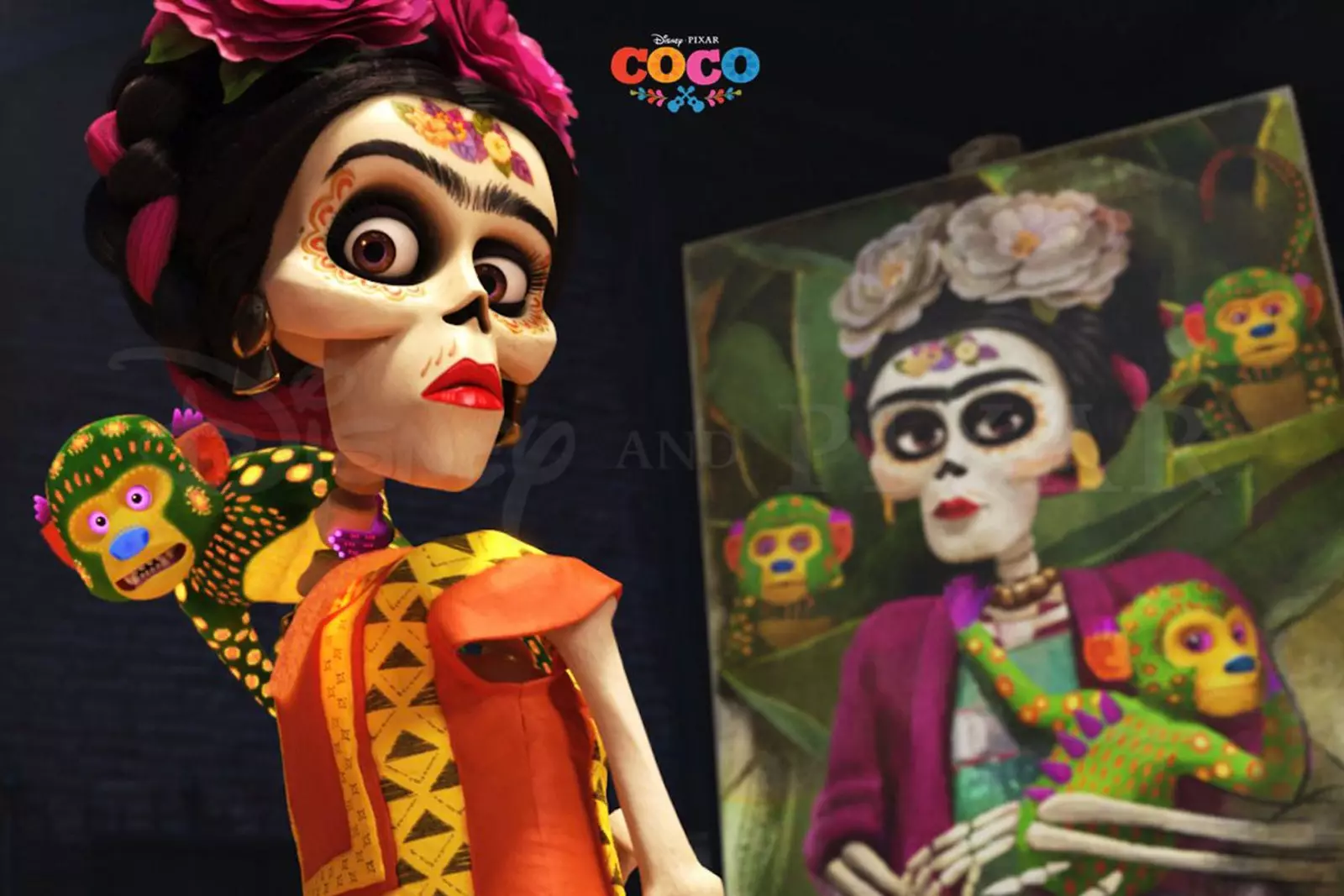
Frida, very much alive among the dead.
From shredded paper to Frida Kahlo. From cempasuchil petals to mariachis. From alebrijes to the crybaby pixar he has done very cool with his latest film, Coconut, to take Mexico around the world.
Lee Unkrich He had just released _Toy Story 3 when he suggested a new idea at Pixar: a film about the Day of the Dead and Mexico. They told him yes. And he caught him a little bit by surprise, and he freaked out. Writing about talking dolls _(Toy Story) _ or lost fish _(Finding Nemo) _ was not the same as talking about one of the most deeply rooted and celebrated Mexican traditions. They did not want to fall into the controversial “cultural appropriation”, nor abuse clichés or fall short.
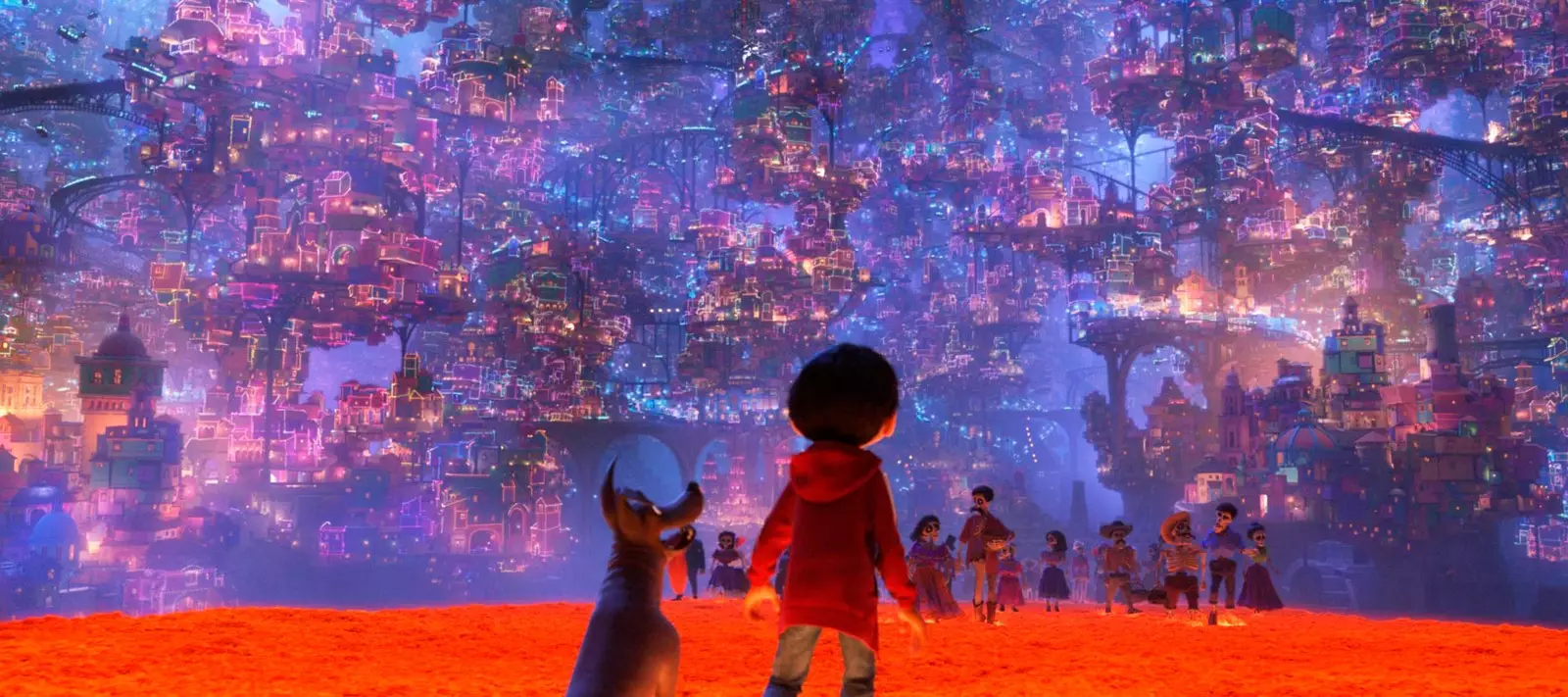
The world of the dead full of light.
That's why in Coconut changed their working method traveled to Mexico many times for three years to soak, they had external advisors (political cartoonist Lalo Alcaraz, playwright Octavio Solís, independent art writer and producer Marcela Davison Avilés) to avoid stereotypes or misconceptions, and Unkrich added as co-director Adrián Molina, born in the US of a Mexican family, which included his personal history.
According to Molina, “Coco is a Universal history". Because in essence it is a story about family (pay attention to that Grandma Coco character that will make you cry) and about wanting to fulfill your dreams. Miguel, the child protagonist, confronts his family and ends up in the world of the dead pursuing his own: to be a musician. But Coco is also very Mexican and for a reason it is already the highest grossing film in the history of the Aztec country. It is full of winks, references and its spirit that we tell you to see it with different eyes.
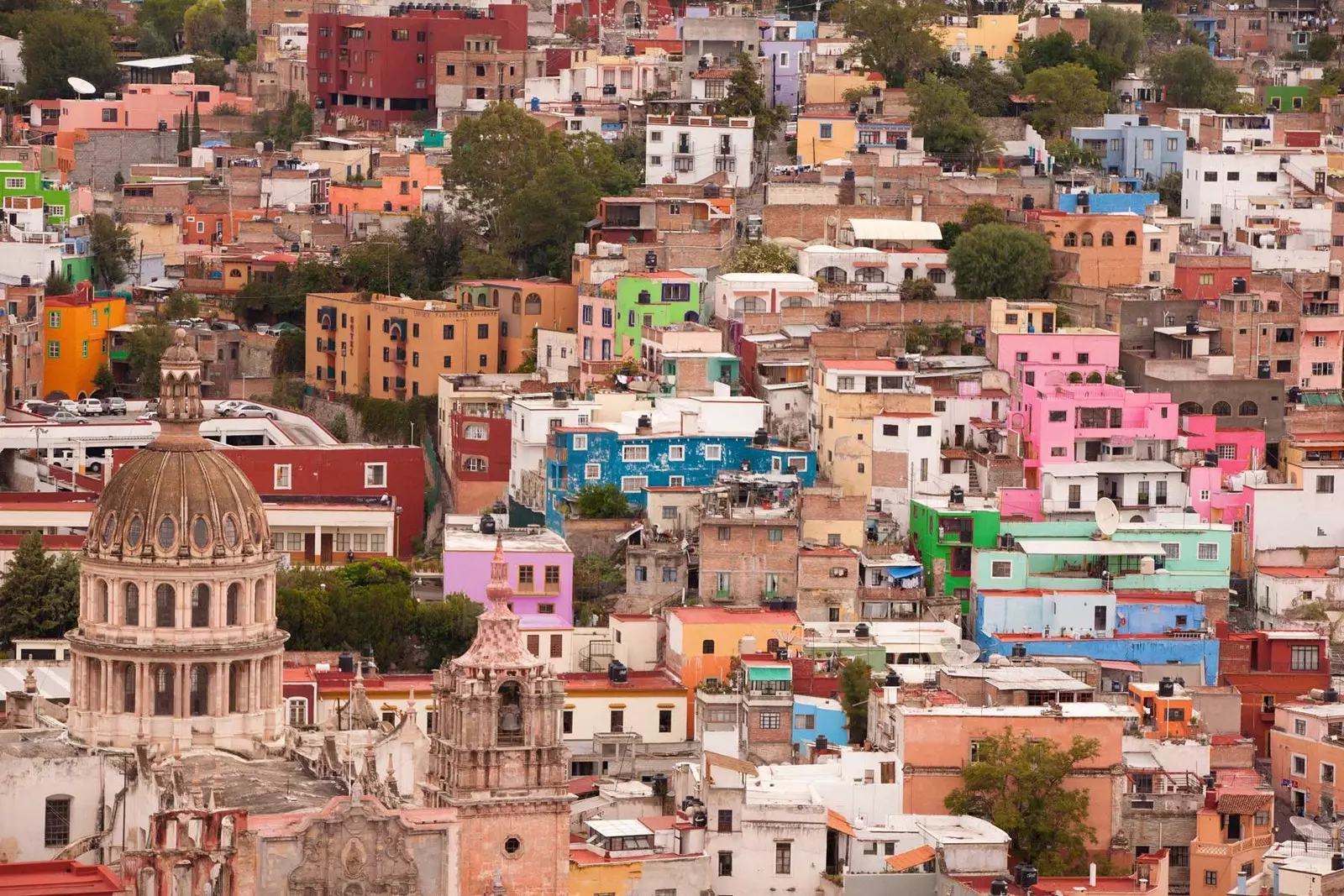
The colorful slopes of Guanajuato.
1. SANTA CECILIA, THE CITY OF THE LIVING
This small town of repainted adobe houses and dusty streets is inspired by Santa Fe de la Laguna in Michoacan.
two. THE CITY OF THE DEAD
To differentiate it from the world of the living, they filled it with bright colors and were inspired by the history of Mexico City. Built on the Aztec city of Tenochtitlan , was surrounded by water, and that is why the towers of infinite houses rise almost like corals in the middle of the sea. And, looking at the detail, these towers of houses are created from the different houses that they saw on their visits to Guanajuato. The colors of houses clustered on the hills of this city in central Mexico are also a clear reference in Coco.
as their tunnels, Guanajuato was a mining city and is built on tunnels that were canals and today are streets and highways, an underground city, like the one that Miguel walks through with his dead guide, Héctor (voiced by Gael García Bernal).
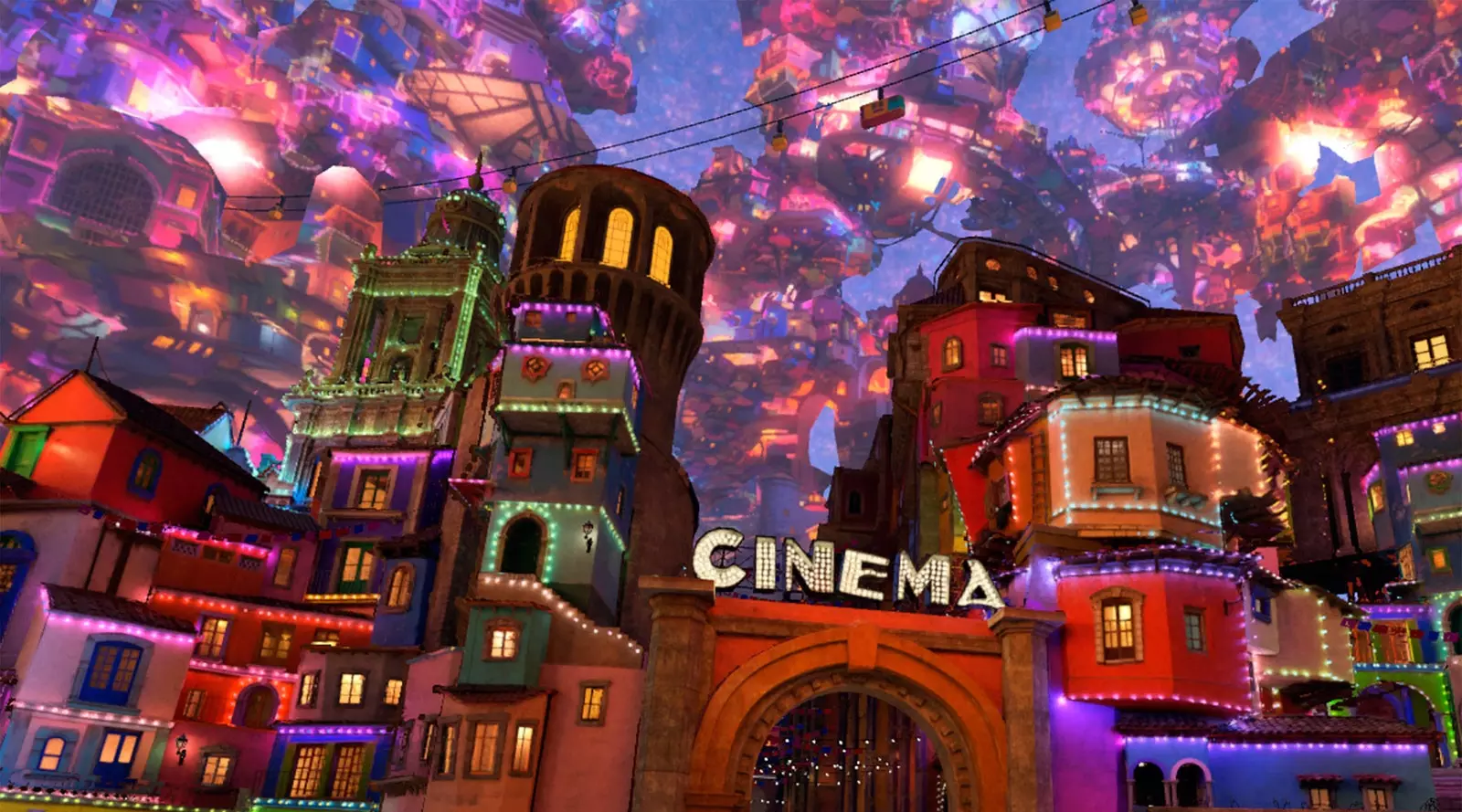
Lights and shadows.
3. MARIGOLD CENTRAL STATION
It is the station where the new dead arrive or from which they leave on the Day of the Dead to visit the living. To create it they were inspired by the Post Office Palace of Mexico City and copied the glass roof of the Grand Hotel Also from Mexico City.
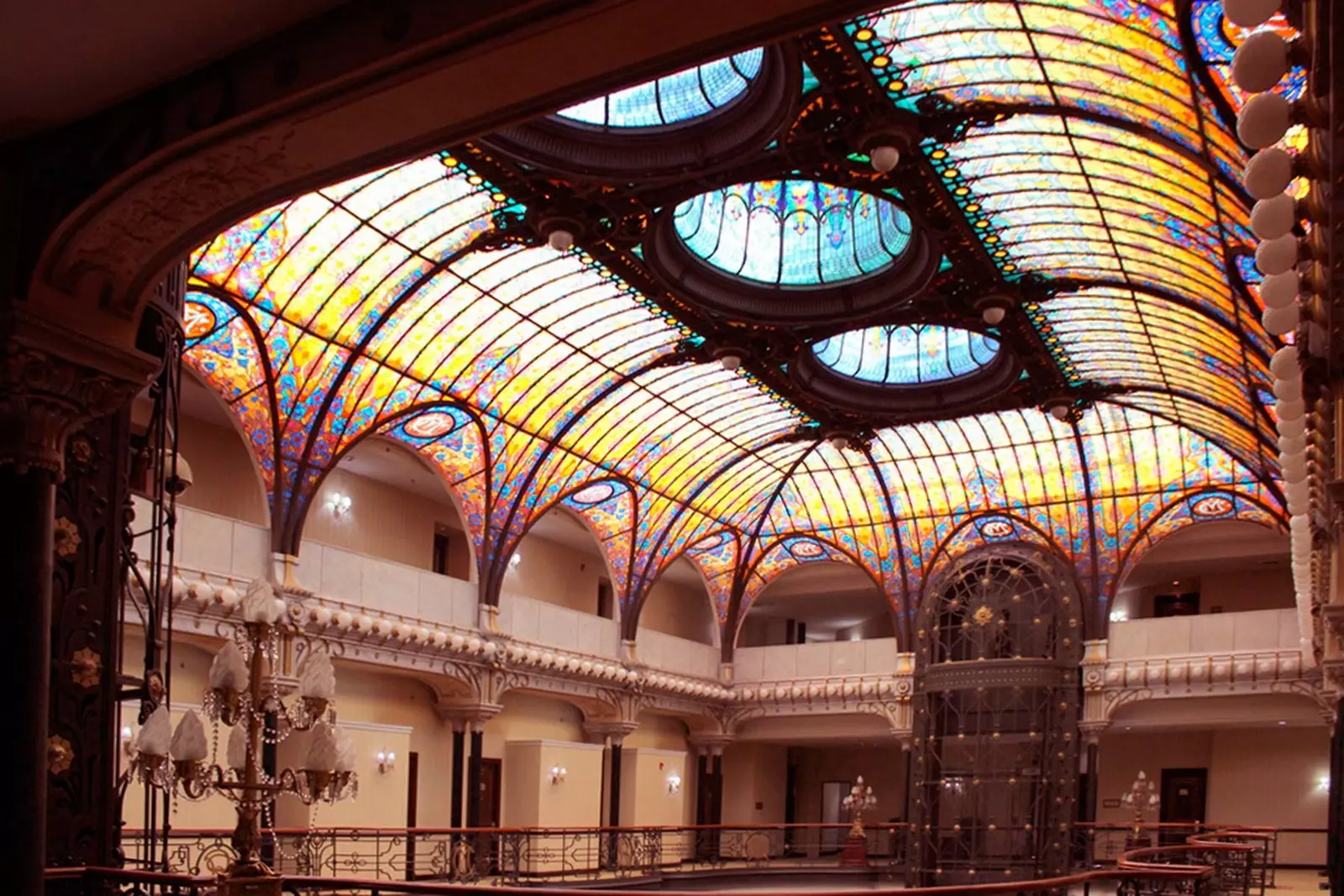
You will see this roof in 'Coco'.
Four. ALEBRIJES AND PAPER CHOPPED
Or the Mexican decoration on the Day of the Dead. Alebrijes are fantasy animals, with almost phosphorous colors that he invented Peter Linares after a feverish nightmare in the 30s, he started making them when he recovered and now they are a very popular craft in Mexico, Specially in oaxaca where, in addition to cardboard or papier-mâché, they are made of wood. The confetti is another typical decoration, garlands, which in Coco serves as a prologue to the story.
5. IT'S NOT A POW, IT'S THE XOLOITZCUINTLE
Is he national dog of Mexico, an autochthonous breed with more than three thousand years old and that has the name of an Aztec god. He is a hairless dog, many wrinkles, but with protective power, according to Mexican tradition, and that is why he follows Miguel on his adventure.
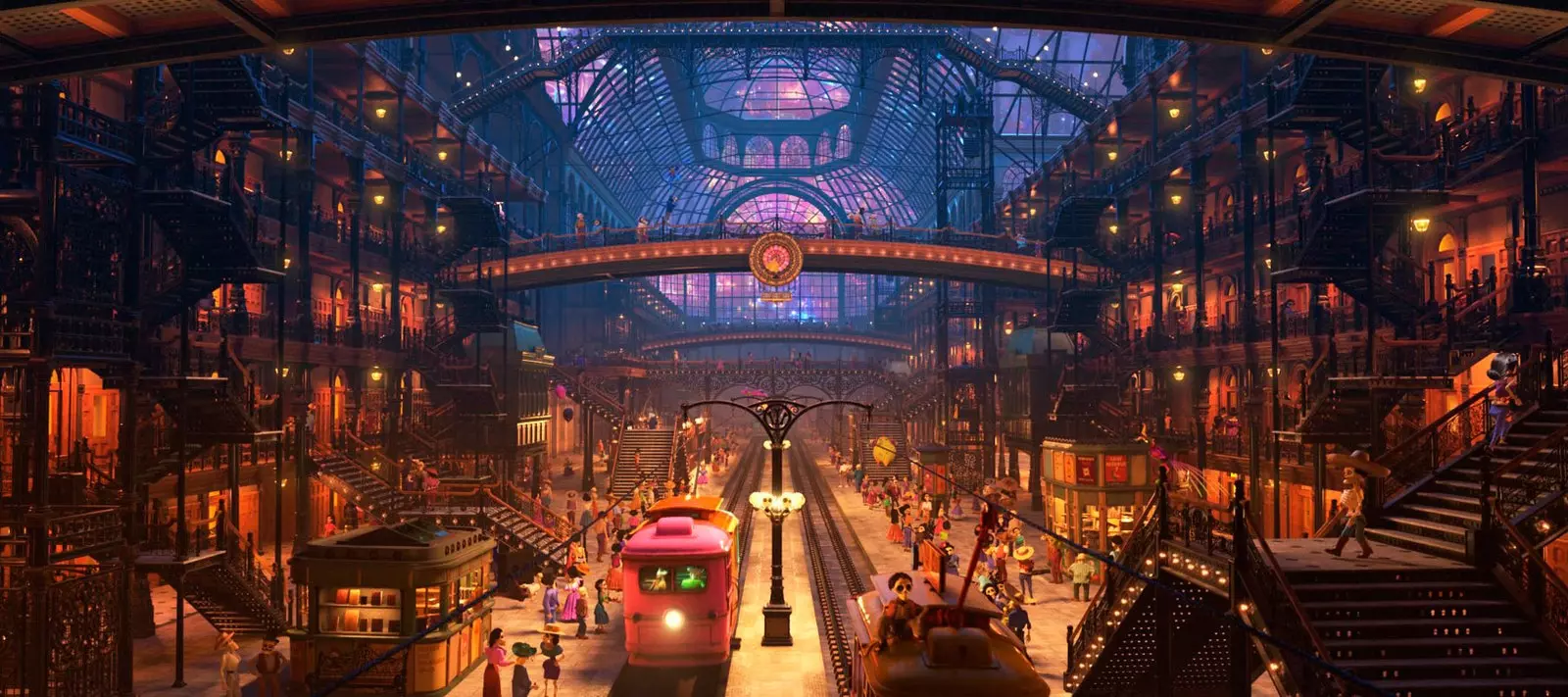
Marigold Grand Central, the station of the dead.
6. THE CEMPASÚCHIL BRIDGES
Or tagetes erecta or calendula It is the intense orange flower with which the altars are decorated on the Day of the Dead. The one that fills every corner of the streets around November 2. The one they put in cemeteries where they go to pay tribute to their ancestors, but happy tributes with music, and in Coco they imagined that the paths of cempasuchil they were what connected the living and the dead.
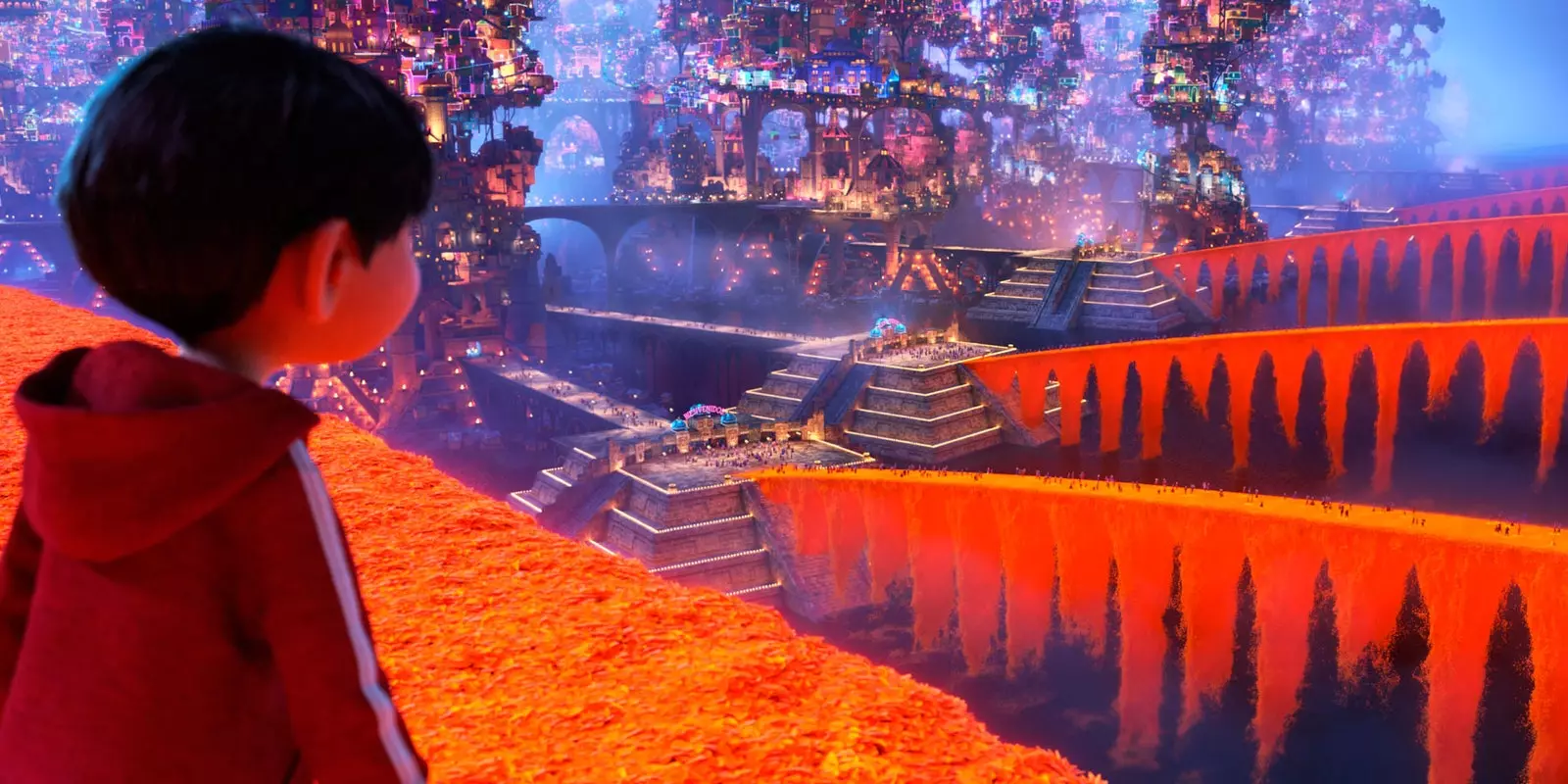
Marigold Bridges.
7. DEATH IS PART OF LIFE
And, in the end, the most important lesson that Coco picks up from Mexican culture: his healthy and open relationship with death. Death is part of life, it is the only sure thing in life, and you have to face it.
